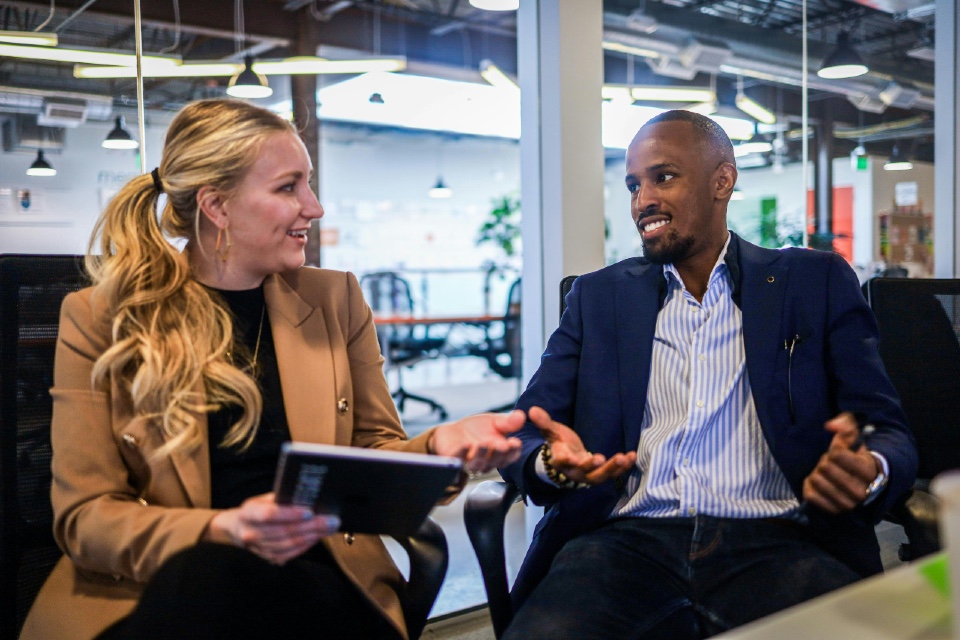Over the past decade, companies of every size have re-evaluated their Environmental, Social and Governance (ESG) strategies, recognising not only the importance of improving their status for customers, employees and business partners but also the new financial imperatives. Investment is increasingly ESG driven, with a global PwC survey of the asset and wealth management industry showing an unprecedented acceleration towards ESG investments in markets around the world.
Corporate reputation now increasingly hinges on pledges to minimise carbon emissions and progress toward the United Nations’ 17 Sustainable Development Goals (SGDs) and demonstrable commitment to employee Diversity, Equity and Inclusivity (DEI). Global regulation is now enforcing change, pushing businesses across all sectors to embed ESG within every part of the organisation. With so many areas to tackle across an incredibly broad remit, how can businesses prioritise change and demonstrate tangible improvements?
Dave Page, Founder & Chief Strategy Officer, Actual Experience, explains how an inherent understanding of the unique employee experience can enable companies to leverage IT as the backbone of its ESG transformation— to eradicate digital inequality, reduce carbon emissions and embrace new business opportunities…
New ESG Imperative
For the past few years, corporate commitment to ESG has played a key role in investment strategies, with companies increasingly aware of the vital importance of their commitment to sustainability and employee wellbeing. While reputational mis-steps can devastate share price and undermine stakeholder confidence, the potential gains are also compelling. A recent study by McKinsey estimated that the transition to net zero alone will provide business opportunities of $12trn per year – from capturing new markets, addressing changing customer and investor needs as well as attracting and retaining talent.
Adding to these commercial imperatives is the pressure created by the fast-evolving regulatory landscape. The new US Securities and Exchange Commission plans, for example, to enhance and standardise climate related disclosures for investors, will require listed companies to disclose information about direct greenhouse gas (GHG) emissions (Scope 1), indirect emissions from purchased electricity or other forms of energy (Scope 2), as well as certain types of GHG emissions from upstream and downstream activities in its value chain (Scope 3).
The challenge for companies across all sectors, however, is not only understanding how best to drive change but also to demonstrate tangible improvements.
Proof of Change
While businesses have been collecting enormous volumes of data over the past two decades, most boards now acknowledge there are significant gaps in understanding to support ESG strategies. How many companies are able to measure the impact of Working from Home (WfH) on reducing the business’ Scope 3 carbon emissions? How many know if progress is being damaged by the drive to get employees back into the office?
Is the company’s DEI strategy being undermined by the digital inequality associated with remote working and, if so, who is affected and what is the root cause? Without detailed, immediate insight in the reality of each employee’s unique digital workplace experience, businesses are dangerously constrained. They cannot prioritise change and they cannot demonstrate the improvements required by regulators and investors alike.
It is now essential to understand the digital workplace and the unique experience of each employee. By identifying how each individual feels about their digital workplace, in detail and continuously, a company gains an extraordinary depth of knowledge that can not only highlight ESG priorities, from addressing digital inequality to reducing carbon emissions, but also enable fast, effective and measurable change.
Inclusivity and Equality
Ensuring workforce well-being is a core component of any ESG strategy – and companies have invested heavily to understand and improve diversity, inclusivity and employee well-being. After the extraordinary shift in workplace experience over the past three years, it is now vital to understand if any remote working employees are suffering due to digital inequality. Are the less well paid in the organisation disproportionately affected by their inability to invest in technology at home? What is the impact on their ability to work, their interactions with colleagues and their long-term job prospects?
To truly understand the unique employee digital experience, senior management require more than incremental HR survey information and system uptime figures from IT. They need hard scientific data, a quantified analysis of the impact, well-being, productivity and inequality associated with each employee’s digital experience. The results can be distressing for those committed to DEI. By translating IT data into a human metric for each employee, one organisation discovered a massive 82% of its employees have a frustrating digital experience. Even worse, 1.4% were suffering to the extent that their lives were being ruined by a lack of usable digital workplace technology.
This insight allows a business to prioritise improvements for specific employees. Further, it also reveals exactly where, how and why the digital inequality issues arise, allowing the organisation to fast-track improvements, delivering dramatic improvements for those individuals.
Accelerating Emission Reduction
Transforming the quality of the digital workplace to deliver an optimum employee experience provides an array of opportunities to support both ESG goals and add business value. It can provide a foundation for reducing the carbon emissions associated with employee commutes and business travel. When employees can confidently replace face-to-face meetings with overseas clients with a compelling digital alternative and when they feel engaged with colleagues wherever they are located, cultural change will accelerate. People at every level of business will be encouraged to embrace the value of an engaging virtual connection, cutting the travel that is such a heavy contributor to scope 3 emissions.
An improved employee digital experience can also deliver extraordinary productivity gains. The company above identified an average 6.9 days lost per employee each year due to the slow digital workplace, rising to 32 days for those with the worst experience. The ability to prioritise, remediate and improve the employee experience not only achieves ESG goals by eradicating digital inequality but also delivers bottom line benefits, from productivity as well as the retention gains associated with a positive digital workplace.
Critically, this process also provides the tangible measurement required to meet regulatory and investor reporting requirements. It can immediately show investors the number the employees within the ‘well-being’ cohort that need additional support – and allow a company to demonstrate year on year improvement. It can demonstrate the reduction in wasted time and confirm the cut in travel related carbon emissions. It can prove the business is committed to continually improving both employee experience and its impact on the world – a process that will not only meet regulatory and investor goals but also support business success through improved staff retention and recruitment.







